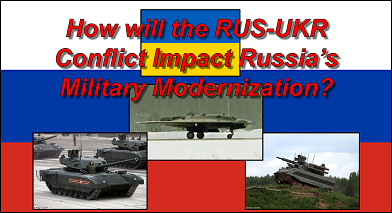[Editor’s Note: Army Mad Scientist welcomes back returning guest blogger Dr. Jacob Barton with today’s insightful post, exploring how Russia’s “special military operation” in Ukraine could affect Russian military modernization, given its extensive munitions expenditures and combat losses, the international trade sanctions that have been implemented, and the resultant economic constraints. Will this conflict so thoroughly exhaust the traditional might of the Russian military that it forces a national revolution in military affairs — prompting a wholesale transformation to a smaller, more professional, and modernized Russian army? And even if they have the will to reform, who will provide them with the sine qua non chips ubiquitous to modern weapons systems, given international sanctions? Or will Russian “culture devour strategy for breakfast,” with entrenched hardliners doubling down on maintaining Mother Russia’s military status quo, maintaining large inventories of legacy ground combat systems (albeit in battle-attrited quantities); sustaining costly Naval, Aerospace, and Rocket Forces; and continuing their tradition of large but inefficient conscript / contract forces?
There are a host of second and third order effects rippling out from this conflict as well. NATO is more united than ever, with member nations increasing their defense spending and formerly neutral Finland and Sweden seeking to join the alliance. Traditional foreign military sales clients are watching Ukraine’s David continued bloodening of Russia’s Goliath — will once reliable customers turn to the West for future weapons systems purchases? And will former Soviet republics feel emboldened by Ukraine’s continued resistance to a weakened Moscow, thawing previously frozen conflicts and igniting new ones in the near abroad ? Closer to home, will U.S. Army modernization efforts heed the painful lessons learned from Russia’s current modernization conundrum? Read on!]
The flawed Russian invasion of Ukraine has had wide ranging effects on its forces. However, the most critical impact may yet be realized. The current conflict will have long-term ramifications on Russia’s military modernization and its ability to prepare for or sustain a conflict with NATO and the West. Observations from the invasion suggest that Russia may find itself without the personnel, weapons, or ammunition it believes it needs for a war with the West.
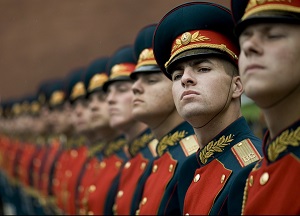 The amount of Russian Armed Forces casualties from the conflict is staggering. According to independent estimates from last month, approximately 15,000 Russian troops have been killed in the war. Considering the investment required to produce these soldiers, Russia cannot afford to lose the volume of soldiers its leaders appear willing to sacrifice. Consider that an infantry lieutenant costs Russia $10,000 to train over five years, with other officers costing up to $60,000 each. An experienced fighter pilot can cost up to $14 million to train over a period of 14 years.1 Given the years of training and the hundreds of millions of dollars lost, Russian Armed Forces’ will need to make radical adjustments to training, recruiting, and retention to recover. Russia is already experiencing challenges in its recruiting efforts. Although official statistics are unavailable, several leading Russia watchers highlight the difficulty Russian Armed Forces are having contracting enough forces to refit operational units in Ukraine. It has even reduced the minimum contract period to four months to accommodate. Prior to the conflict, Russia recognized the demographic stresses on its military and its diminished ability to recruit candidates from urban areas. To overcome these challenges, it established over 80 new recruiting centers in rural areas where the standard of living among young adults is significantly lower and the attractiveness of a military lifestyle is higher. Yet, even with this initiative, Russia is having difficulty countering the negative public sentiment broadcast on social media, particularly from Russian troops deployed to the front lines. With morale amongst its forces at its lowest in recent history, the Russian Armed Forces will almost certainly see lower numbers of enlistments in the coming years. With that in mind, if Russia decides it must retain a consistent force size, it will be forced to adjust the mix of contract to conscript troops, relying more heavily on conscripts that have minimal training. Furthermore, Russian military training institutions will need to make concessions to decrease training time or increase throughout, putting more stress on a widely considered underperforming force.
The amount of Russian Armed Forces casualties from the conflict is staggering. According to independent estimates from last month, approximately 15,000 Russian troops have been killed in the war. Considering the investment required to produce these soldiers, Russia cannot afford to lose the volume of soldiers its leaders appear willing to sacrifice. Consider that an infantry lieutenant costs Russia $10,000 to train over five years, with other officers costing up to $60,000 each. An experienced fighter pilot can cost up to $14 million to train over a period of 14 years.1 Given the years of training and the hundreds of millions of dollars lost, Russian Armed Forces’ will need to make radical adjustments to training, recruiting, and retention to recover. Russia is already experiencing challenges in its recruiting efforts. Although official statistics are unavailable, several leading Russia watchers highlight the difficulty Russian Armed Forces are having contracting enough forces to refit operational units in Ukraine. It has even reduced the minimum contract period to four months to accommodate. Prior to the conflict, Russia recognized the demographic stresses on its military and its diminished ability to recruit candidates from urban areas. To overcome these challenges, it established over 80 new recruiting centers in rural areas where the standard of living among young adults is significantly lower and the attractiveness of a military lifestyle is higher. Yet, even with this initiative, Russia is having difficulty countering the negative public sentiment broadcast on social media, particularly from Russian troops deployed to the front lines. With morale amongst its forces at its lowest in recent history, the Russian Armed Forces will almost certainly see lower numbers of enlistments in the coming years. With that in mind, if Russia decides it must retain a consistent force size, it will be forced to adjust the mix of contract to conscript troops, relying more heavily on conscripts that have minimal training. Furthermore, Russian military training institutions will need to make concessions to decrease training time or increase throughout, putting more stress on a widely considered underperforming force.
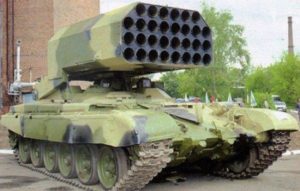
Russia has lost more equipment than it can afford. According to data provided by the Ukrainian Land Forces last month, a total of 2,238 armored vehicles, 873 tanks, 408 artillery systems, 179 aircraft, and 154 helicopters have been destroyed.2 3 According to Russian Defense industry figures4, the approximate cost of a Russian armored vehicle is at least $70,000, a T-72 Main Battle Tank (MBT) is at least $500,000, a T-90 MBT is between $2.5 – $4.5 million, a TOS-1 220mm Heavy Flamethrower System is $6 million, a 2S19 152mm Self-propelled Howitzer is at least $2 million, an Su-27 Multirole Fighter Aircraft at least $26 million, an Su-25 Close Air Support Aircraft is at least $11 million, and an Mi-28 Attack Helicopter at least $15 million. For only the first two days of Russia’s invasion, Ukrainian forces estimate the material cost from the destruction of Russian tanks, aircraft, and weapons at $3 billion.5 When the material costs are extrapolated to other economic impacts, the daily cost of war for Russia likely exceeded $20 billion at the height of the conflict with current estimates at over $4 billion per day, according to figures from the Consultancy.6 At 113 days into this conflict, that equates to $452 billion.

While some of these figures may be inflated, Russia has undoubtedly lost far more equipment than they expected. Even a conservative estimate of only their equipment losses exceeds $6.2 billion. Russia likely does not have the resources to replace this equipment because it would cost more than it allocates for the procurement of new equipment in a given year. Based on historical production and the current impact of Western sanctions, the Russian defense industry almost certainly could not produce new equipment to replace these destroyed systems in the next five years. Notably, Russia retains a surplus of legacy equipment with as many as 7,000 tanks and they have already taken many of them out of warehouses and vehicle graveyards to refit frontline units. This likely means that if Russia replaces its destroyed equipment with legacy equipment, it will be forced to outlay significantly more resources for its operations and maintenance budgets to keep these systems in use, a consequence that would have second-order impacts on its modernization budgets.
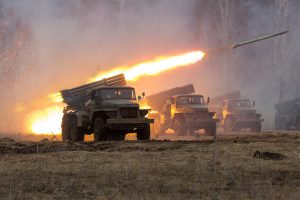
Russia’s future modernization and quickly decreasing stockpile could imply they will rely more on other countries for military assistance. In keeping with its traditional tactical doctrine, Russia has expended a tremendous amount of ammunition and ordnance, attempting to destroy its enemy and take Ukrainian territory during the three plus months of conflict. Open-source estimates suggest that Russian Armed Forces are down to 30 percent of its total ammunition stockpiles. This figure is questionable, but calculations derived from known Russian ammunition sources indicate that it has no more than 70 percent of it remaining. Coupled with a high failure rate –between 10 and 40 percent– among its ballistic missiles, and it explains why some Russian units are losing confidence in their ability to maintain this level of operational tempo. Equally as important, successful Ukrainian targeting of Russian logistics is limiting Russia’s ability to get ordnance to its forces in need. As the fight continues, supply chain disruptions from the resulting sanctions will further hinder Russia’s ability to bring in external sources of ammunition and discreet supplies like microchips needed for its precision missiles and artillery — specifically, those Russia wants available for a war with NATO. These problems portend a situation where Russia would be forced to rely on other countries, like China, for more military resources. A future in which Russia relies on Chinese-made equipment may make for a more capable Russian force, but 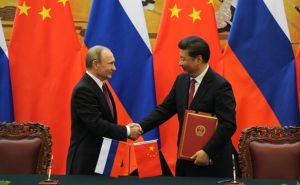 also on increasingly subservient to its southern neighbor. Most signs suggest that Russia’s leaders would be unwilling to accept a role that makes Russia a “junior partner” to China.
also on increasingly subservient to its southern neighbor. Most signs suggest that Russia’s leaders would be unwilling to accept a role that makes Russia a “junior partner” to China.
Based on Russia’s defense spending trends and the weakening of its economy, Russia will likely be unable to meet its modernization goals for at least the next five to ten years. According to the Bank of Russia’s economic forecast, its gross domestic product (GDP) will decrease by 8–10 percent in 2022.7 Russia’s Economic  Ministry sees its GDP contracting by 12.4%, while Western economists say the drop could be over 15 percent. Meanwhile, Russia’s official military spending in 2021 increased by 2.9% to $65.9 billion, or just over 4% of Russia’s GDP, according to SIPRI.8 This equates to less than 8 percent of the U.S. Defense budget for fiscal year 2022. In 2021, Russia repeatedly revised its defense budget to allocate funds for arms procurement and modernization, making a 14 percent increase over its 2020 budget. Relatedly, Russia’s 10-year defense priorities highlighted in their State Armament Plans (GPVs) demonstrate its desire for more arms procurement and modernization. GPV 2020, which ran from 2011 to 2020, focused on increasing the overall share of modernized equipment to 70%. The newest publicly available plan, GPV 2027, calls for total spending of about $330 billion and 3%-4% of GDP from 2018 to 2027. However, the allocation among its services leaves its ground forces — those suffering the majority of combat losses in this conflict — under-resourced.
Ministry sees its GDP contracting by 12.4%, while Western economists say the drop could be over 15 percent. Meanwhile, Russia’s official military spending in 2021 increased by 2.9% to $65.9 billion, or just over 4% of Russia’s GDP, according to SIPRI.8 This equates to less than 8 percent of the U.S. Defense budget for fiscal year 2022. In 2021, Russia repeatedly revised its defense budget to allocate funds for arms procurement and modernization, making a 14 percent increase over its 2020 budget. Relatedly, Russia’s 10-year defense priorities highlighted in their State Armament Plans (GPVs) demonstrate its desire for more arms procurement and modernization. GPV 2020, which ran from 2011 to 2020, focused on increasing the overall share of modernized equipment to 70%. The newest publicly available plan, GPV 2027, calls for total spending of about $330 billion and 3%-4% of GDP from 2018 to 2027. However, the allocation among its services leaves its ground forces — those suffering the majority of combat losses in this conflict — under-resourced. 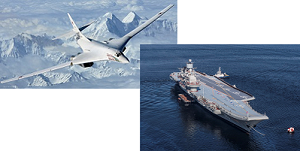 According to Congressional Research Service reports, Aerospace Forces and the Russian Navy received top priority during GPV 2020, allowing for the introduction of new and upgraded legacy systems, including improved missiles and precision-guided munitions.9 Russia’s ground forces have been the lowest funding priority in its modernization plans, and most allocated funds went towards upgrading existing platforms. Upgrading small amounts of its total platforms negatively affected modernization by decreased standardization across units and increased maintenance costs. Still, these funding priorities are likely to continue. Unbalanced modernization funding combined with decreased buying power means Russia will be forced to make sacrifices in modernization or force structure and readiness over the next decade.
According to Congressional Research Service reports, Aerospace Forces and the Russian Navy received top priority during GPV 2020, allowing for the introduction of new and upgraded legacy systems, including improved missiles and precision-guided munitions.9 Russia’s ground forces have been the lowest funding priority in its modernization plans, and most allocated funds went towards upgrading existing platforms. Upgrading small amounts of its total platforms negatively affected modernization by decreased standardization across units and increased maintenance costs. Still, these funding priorities are likely to continue. Unbalanced modernization funding combined with decreased buying power means Russia will be forced to make sacrifices in modernization or force structure and readiness over the next decade.
The combination of these factors most likely means Russia will be unable to modernize enough equipment to remain near parity with the U.S. Currently, the United States remains the world’s biggest military spender by a significant margin, making up 38 percent of the global share. Looking ahead, Russia will be faced with calls for dialing back foreign policy goals, a smaller military structure, and reduced deployed footprints, with more prominent use of private military contractors and proxies and a greater reliance on its nuclear deterrents.
If you enjoyed this post, check out Dr. Barton’s previous post, China’s PLA Modernization through the DOTMLPF-P Lens
… as well as the following related content:
Russia-Ukraine Conflict: Sign Post to the Future (Part 1), by Kate Kilgore
The Pivotal Role of Small and Middle Powers in Conflict: Poland and the War in Ukraine, by proclaimed Mad Scientist Collin Meisel and Tim Sweijs
War in Ukraine: The Urban Fight is Happening Now and associated podcast with John Spencer
“The Tenth Man” — Russia’s Era Military Innovation Technopark, by Ray Finch
The Bear is Still There: Four Insights on Competition with Russia
How Russia Fights and associated podcast
Russia Landing Zone content on the Operational Environment Enterprise public facing page
About the Author: Dr. Jacob Barton is currently the Director, Future Operational Environment (FOE), Army Futures Command, in Austin, Texas. He previously served as the senior contract intelligence analyst for the TRADOC G-2’s Operational Environment Integration element. He is also an Army Reserve Intelligence Officer and previously worked for the U.S. Senate and House of Representatives.
Disclaimer: The views expressed in this blog post do not necessarily reflect those of the U.S. Department of Defense, Department of the Army, Army Futures Command (AFC), or Training and Doctrine Command (TRADOC).
1 Mia Jankowicz, “Russia’s losses in Ukraine include many elite troops that take years and millions of dollars to train, BBC investigation finds,” April 12, 2022, https://www.businessinsider.com/russia-has-lost-expensive-time-consuming-soldiers-to-train-bbc-2022-4.
2 David Averre, “Putin’s mighty war machine on the SCRAPHEAP,” MAILONLINE, April 24, 2022, https://www.dailymail.co.uk/news/article-10747991/Russia-lost-873-tanks-179-aircraft-21-800-troops-just-two-months-fighting.html.
3 Gandharv Walia, “Ukrainian army damaged 1,000 tanks, 200 aircraft, 2,500 armored vehicles of Russian forces, claims Zelensky,” WION, May 01, 2022, https://www.wionews.com/world/ukrainian-army-damaged-1000-tanks-200-aircraft-2500-armored-vehicles-of-russian-forces-claims-zelensky-475357.
4 Costs projected in U.S. dollars.
5 Renaud Foucart, “The cost of war: how Russia’s economy will struggle to pay the price of invading Ukraine,” March 11, 2022, https://theconversation.com/the-cost-of-war-how-russias-economy-will-struggle-to-pay-the-price-of-invading-ukraine-178826.
6 Research: ‘Ukraine war costs Russian military €20 billion per day’, March 2, 2022, https://www.consultancy.eu/news/7433/research-ukraine-war-costs-russian-military-20-billion-per-day.
7 https://www.cbr.ru/eng/press/keypr/#:~:text=According%20to%20the%20Bank%20of%20Russia’s%20baseline% 20forecast%2C%20GDP%20will,the%20same%20period%20in%202022
8 Miriam Berger, “Russia boosted military spending ahead of Ukraine war, report says,” April 25, 2022, https://www.washingtonpost.com/world/2022/04/25/ukraine-russia-global-military-spending-2021/.
9 Andrew S. Bowen, “Russian Armed Forces: Capabilities,” June 30, 2020, https://crsreports.congress.gov/product/pdf/IF/IF11589.

